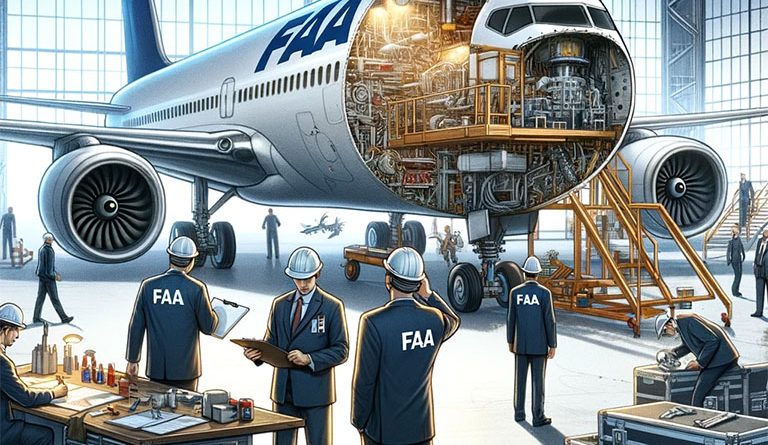Turbulence Ahead For Boeing Facing FAA Probe Over Manufacturing Practices
In an unprecedented move, the Federal Aviation Administration (FAA) has launched a comprehensive investigation into Boeing’s manufacturing processes, following a disturbing incident involving a Boeing 737-9 MAX aircraft. This development marks a critical juncture not only for Boeing, a titan in the aerospace sector, but also for the broader industry, which prides itself on stringent safety and manufacturing standards.
The incident in question, involving the loss of a passenger door plug mid-flight, has raised serious concerns over Boeing’s adherence to safety protocols and quality controls. This article delves into the intricacies of the FAA’s investigation, exploring its implications for Boeing and the entire aerospace sector. As the world watches, the outcomes of this investigation could have far-reaching effects on aviation safety standards and manufacturing norms.
Details of the FAA Investigation
The FAA’s decision to increase oversight of Boeing’s manufacturing processes stems from a recent in-flight incident involving a Boeing 737-9 MAX. In a startling revelation, the aircraft lost a passenger door plug while airborne, prompting immediate action from aviation authorities. The FAA’s response has been swift and decisive, with a thorough audit of the Boeing 737-9 MAX production line and its suppliers now underway.
This audit aims to evaluate Boeing’s compliance with approved quality procedures, with the results set to determine the necessity of further audits. The FAA is not only increasing its monitoring of Boeing 737-9 MAX in-service events but also assessing safety risks related to delegated authority and quality oversight. The possibility of shifting these functions to independent, third-party entities is under consideration, marking a potential paradigm shift in how aerospace manufacturing oversight is conducted.
Boeing’s reaction to the FAA’s announcement has been one of welcome and cooperation. The company’s statement underlines its commitment to quality and safety, affirming its readiness to take necessary actions across its production system. This proactive stance is crucial as Boeing navigates through this challenging period.
The Implications for Boeing and the Aerospace Industry
The implications of this investigation for Boeing are significant. A key player in the aerospace industry, Boeing’s reputation for quality and safety is now under intense scrutiny. The potential findings of the FAA’s audit could impact investor confidence, customer trust, and the company’s financial health. For an industry reliant on public confidence in safety standards, the ripple effects could be profound.
The aerospace industry at large is also under the microscope. This incident raises critical questions about the adequacy of current manufacturing and quality control standards. If Boeing, a leader in the industry, is found wanting in these aspects, it calls into question the practices of other manufacturers and the effectiveness of existing regulatory frameworks.
Historical Context and Previous Incidents
Boeing’s history with safety issues provides essential context for understanding the gravity of the current investigation. The company has faced scrutiny before, most notably with the 737 MAX series aircraft, which were grounded worldwide following two fatal crashes. These incidents, linked to software and design flaws, had already put Boeing’s safety culture and regulatory compliance in the spotlight.
Comparing Boeing’s situation with other incidents in the aerospace industry offers a broader perspective on manufacturing and safety standards. Past events have shown that lapses in these areas can have catastrophic consequences, underscoring the need for rigorous oversight and continuous improvement in safety protocols.
Future Prospects and Industry Reactions
The outcome of the FAA’s investigation into Boeing’s manufacturing processes is eagerly anticipated. While it is too early to predict the exact consequences, the findings will likely have lasting effects on Boeing’s operations and safety practices. The industry’s response to these developments will be critical, as companies and regulatory bodies may need to reevaluate and strengthen their safety and quality assurance measures.
Industry experts, other aerospace companies, and regulatory bodies have been closely monitoring the situation. Their reactions will be telling of the industry’s readiness to adapt and evolve in the face of challenges to safety and manufacturing standards. As Boeing navigates through these turbulent times, the entire aerospace sector watches and learns, ready to reinforce the paramount importance of safety in aviation.
